If you have just a few days to spend in a charismatic European city, Krakow has a lot to offer. Castles and kings, churches and synagogues, fine buildings, great shopping, and the endless River Vistula running through it.
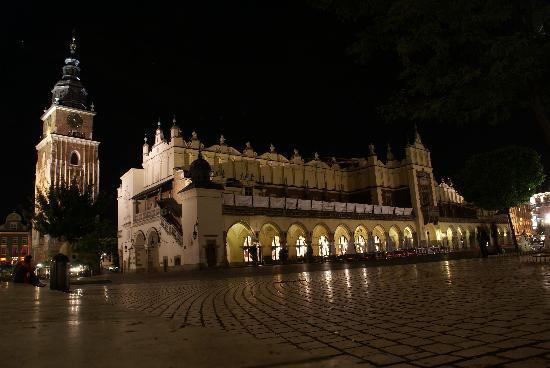

Be prepared to stand and stare in Europe’s largest medieval market square, Rynek Glowny. Elegant buildings line the square but your eyes are drawn immediately to the dramatic centre piece- Sukiennice, the Cloth Hall. Originally built in the 14th century, this has always been a place of riches. Once home to wealthy cloth merchants, today it boasts stalls laden with amber, jewellery, and craftwork. The merchants coats of arms are still displayed high on the walls and the place bustles with life. Pavement cafes nestle beneath the arcades and upstairs an art gallery houses fine Polish art and sculpture.
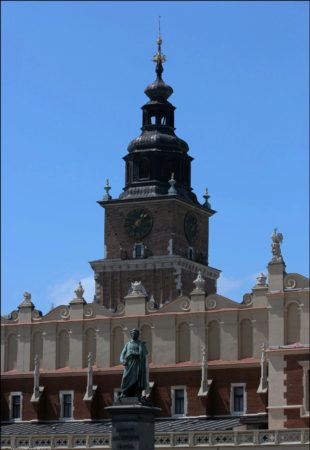

The square is always enlivened by flower sellers and art exhibitions, and is often the venue for concerts and special events. The remains of the Ratusz, the town hall, now just a slim tower, is home to the Tourist Information Office, where maps of the centre can be obtained. The more energetic can climb the tower for a great view. Crowds gather in the square on the hour to gaze up at the Koscziol Mariacki, St Mary’s Church. A trumpeter plays a few bars, ending abruptly, in imitation of the lone watchman, silenced by an arrow in 1241,while trying to warn of the advance of the Tatar Army. Inside the church, the azure ceiling is studded with gold stars and the beautifully gilded and crafted Veit Stoss altar prepares to open at 12pm daily (you need to purchase a ticket first).
The square is at the centre of the Stare Miasto (old town) and all of life passes through. Horsedrawn carriages clop past, their drivers in colourful costume. Restaurants and cafes line the square and if you don’t mind paying slightly over the odds it’s a wonderful place to just sit and absorb the atmosphere. Restauracja Szara is elegant and well positioned to await the bugle call.
I love Polish food. The soups are nutricious and tasty, often with rice or pasta added. Pierogi are small dumplings, stuffed with sweet or savoury fillings. Pork is cooked wonderfully, and don’t miss out on nalesniki (pancakes with delicious toppings- wisnia, sour cherry, my favourite). Chimera, just round the corner at 3 Sw. Anny , has an excellent self service bar at student prices.
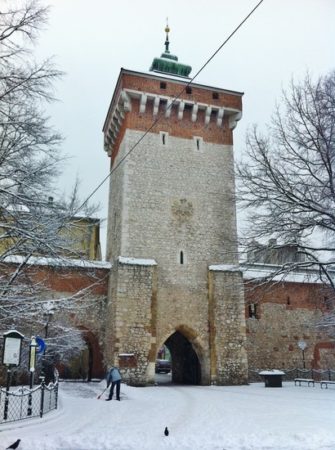

Krakow is a wonderful place for strolling. The green, leafy Planty circles the old town and Florianska and Grodzka are full of shopping and eating pleasures, the architecture beautiful throughout. Known as the Royal Way, the reason for this becomes clear as you head towards the towering walls of Wawel Castle and Cathedral. The traditional route used by Polish monarchs entering the city was through striking Florianska Gate and south towards Wawel Hill. For over 500 years Poland was ruled from Krakow and even after the capital was moved to Warsaw, a more central location, Polish monarchs continued to be buried in Wawel Cathedral. It is the spiritual and patriotic heart of Poland in a fairytale setting. A cathedral has stood on this spot since 1020.
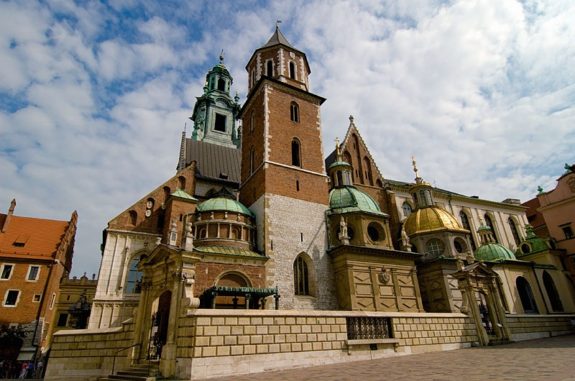

To see the castle and cathedral properly, you need a full day, and tickets should be booked ahead if possible. I managed the cathedral on my own, including the scramble up to Zygmunts Bell Tower (the bell requires 11 men to ring it), but it was worthwhile paying for a tour of the Castle. The internal courtyard is huge, with 3 storey high Italianate arcades. The Royal Chambers are home to 136 well-travelled Flemish tapestries from 16th century. During Nazi occupation most of the castle’s furnishings were removed for safe-keeping. Wawel and Krakow survived intact because they were made Nazi headquarters. Access to the Royal Chambers is free on Sundays and can be booked on www.wawel.krakow.pl
One of my best memories of Krakow is the Balon Widokowy- a tethered hot air balloon which rises over the spires, giving fabulous views out across the city, especially beautiful at sunset. The less adventurous might prefer a river cruise, to relax and simply let the city drift by.
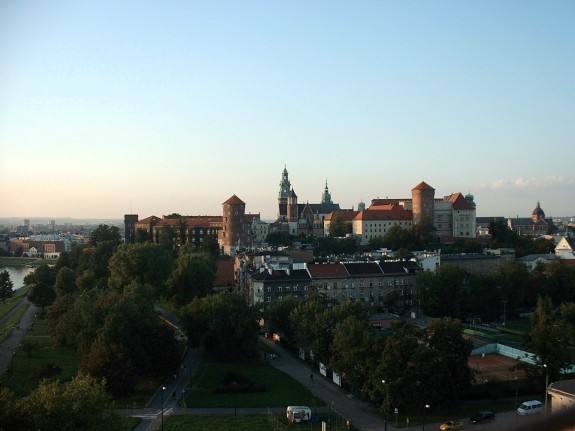

There is so much to see- if you like churches you’ll be spoilt for choice. (60 in the Old Town alone!) I also found the Jagellonian University fascinating. The astronomer Copernicus studied here in the 16th century. One area that has a character all its own is the Jewish Quarter, Kazimierz. Persecuted throughout Europe, the Jews were offered refuge in Krakow. World War 2 put paid to that, but today the cafe scene thrives here. You can still visit some of the synagogues, but it is impossible not to be moved by the remains of the Jewish Cemetery at the Remu’h Synagogue on Ul Szeroka. Destroyed by the Nazis, fragments of the gravestones have been patched together to create a “Wailing Wall”.
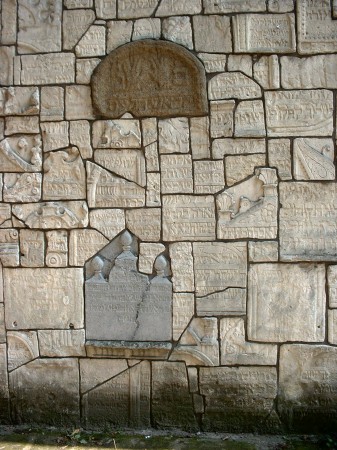

I visited Kazimierz on a guided tour, and if your time is limited these are a great idea. City tours are widely available and cheap. Further afield you may be drawn to visit Auschwitz, and the Salt Mines at Wieliczka are quite extraordinary in their beauty.
Where to stay
Hotel Polski, Ul Pijarska 17, by the Florianska Gate is very fine, central and reasonably priced.
Hotel Polseki, Sandomierska 6 is across the river with views of Wawel from its sun terrace.
If you’re wanting a special place to dine Wierzrynek on Rynek Glowny has fed everybody from Yehudi Menuhin to George Bush, and is staggeringly beautiful. For just a taste of the experience you could call in for tea and cake- Polish ciastko (cake) is fabulous.
